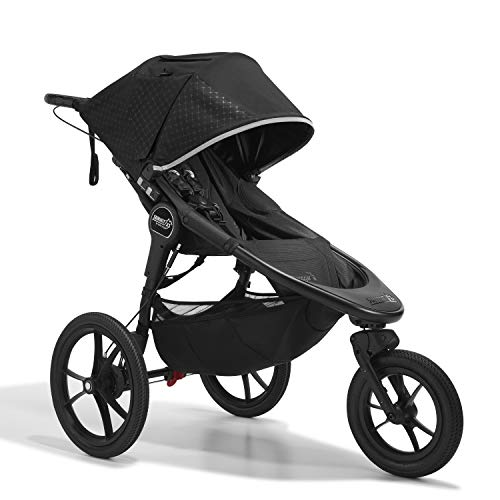Transitioning from Pram to Stroller: A Comprehensive Guide for Parents
Navigating the world of baby gear can be frustrating for new moms and dads, especially when it pertains to selecting between prams and strollers. Both serve essential functions, but they are designed for various needs and stages of a child's development. This article aims to inform parents about the transition from prams to strollers, describing the advantages and factors to consider while offering practical tips.
Understanding Prams and Strollers
Before diving into their differences, it's crucial to comprehend what constitutes a pram and a stroller.
Prams:
A pram, short for perambulator, is usually developed for babies approximately around six months old. It includes a flat, cushioned sleeping area and is mostly meant for transporting extremely kids. Prams are developed for comfort and safety, as newborns require to lie flat to support their spinal column and organs.
Strollers:
Strollers, or pushchairs, are created for a little older kids who can stay up unaided. They can be found in various styles and setups, from lightweight umbrella strollers to heavier-duty models ideal for rough terrains. Best Prams And Pushchairs are more flexible and much easier to maneuver in crowded spaces, making them a popular choice for active families.
Advantages of Transitioning from Pram to Stroller
- Increased Mobility and Convenience
Strollers are usually lighter and more compact than prams, making them much easier to steer through shops, public transportation, and crowded areas. A lot of strollers can fold easily, enabling practical storage. - Flexibility for Different Activities
Modern strollers frequently include multiple setups and can accommodate various activities, including jogging, outside experiences, and shopping trips. They can also adjust to suit children of various ages and weights. - Boosted Child Comfort and Safety
Many strollers now come geared up with innovative security functions, such as five-point harnesses and reclining seats, ensuring that older babies and young children remain comfy and safe during outings. - Cost-Effective Solution
Instead of buying both a pram and a stroller, households can invest in a top quality stroller that satisfies the needs of their growing child, potentially saving money in the long run.
When to Make the Transition
The shift from a pram to a stroller generally occurs when the kid reaches around six to 7 months of age or when they can stay up unassisted. However, several aspects can influence this shift, consisting of:
- Child's Development: If the child reveals signs of wishing to explore their surroundings, it may be time to change to a stroller.
- Household Lifestyle: Active families might need a stroller earlier to accommodate trips and travel.
- Comfort: Observe the kid's comfort level. If they appear confined in a pram or are ending up being more active, it's time to think about a stroller.
Picking the Right Stroller
Picking the ideal stroller needs mindful factor to consider of numerous elements:
| Factor | Description |
|---|---|
| Security Features | Look for tough building and construction, reliable brakes, and harness systems. |
| Weight and Foldability | Choose a light-weight stroller that is simple to fold and transfer. |
| Age Appropriateness | Ensure the stroller is suited for your kid's age, weight, and height. |
| Maneuverability | Test how quickly the stroller moves and turns, especially in crowded areas. |
| Storage Space | Consider the storage capacity below the stroller and the size when folded. |
| Adjustability | Try to find strollers with adjustable features, such as seat recline and manage height. |
FAQs about Transitioning from Pram to Stroller
Q: Is it needed to change to a stroller?A: While it's not compulsory, switching to a stroller usually offers more versatility and ease for both moms and dad and kid as they grow. Q: What includes need to I focus on
in a stroller?A: Prioritize safety features, weight, foldability, and storage capacity based upon your way of life and activities with your child. Q: Can I utilize a stroller for newborns?A: Some strollers can accommodate infant cars and truck seats or
have flat reclining seats, making them appropriate for
newborns. Always check the producer's standards. Q: How can I guarantee my child is comfy in a stroller?A: Look for strollers with padded seats, numerous recline positions, and adjustable leg rests to accommodate your child's comfort. Q: What are the very best types of strollers available?A: Popular types consist of umbrella strollers, jogging strollers, travel system strollers, and convertible strollers, each dealing with variousneeds. Tips for a Smooth Transition Test Out Different Models: Before dedicating to a purchase, physically test different strollers to see which one fits both you and your kid best. Involve Your Child:
If they are old enough, allow your
kid to try various strollers to see which they discover most comfy. Read Reviews: Consider taking a look at online evaluations and suggestions from other moms and dads to much better inform your decision
. Strategy for Storage and Transport: Factor in how the stroller will fit into your car or home storage space to avoid future troubles.
- Examine Your Activities: Think about where and how you prepare to utilize the stroller-- city areas may require a different type compared to rural or off-road settings.
- Transitioning from a pram to a stroller is an important turning point in a kid's life and a substantial decision for moms and dads. By understanding the differences and
advantages of each, moms and dads can make informed options that will support their family's lifestyle and their child's development. Armed with the best information, moms and dads can with confidence browse this shift and
ensure that their child is safe, comfy, and all set for all the experiences ahead.

